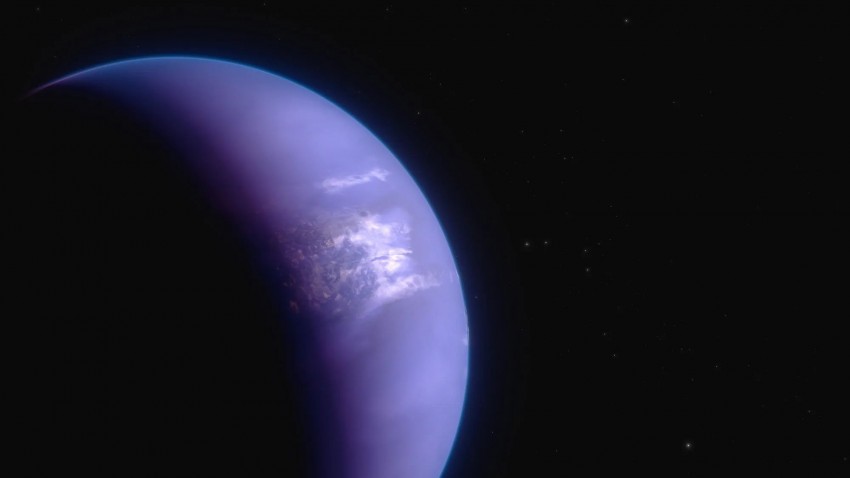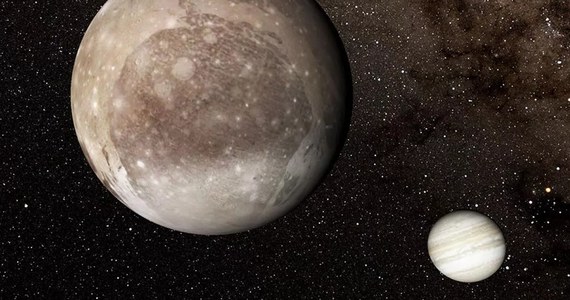WASP-43B It was discovered in 2011. It is one of the “hot Jupiters”, gas exoplanets similar to Jupiter in size, with temperatures much higher than any planet in the solar system. Although the orbits of the star WASP-43b are smaller and cooler than the Sun, the planet itself is 25 times smaller than the distance between Mercury and the Sun. Now, thanks to the Webb Telescope, Astronomers were able to describe the weather on this planet.
Because of its narrow orbit, the planet rotates in sync with its star. Due to tidal forces, WASP-43b is still facing the same side toward the star. In one half there is eternal day, and in the other half there is eternal night. The night side is never lit by a star, but strong easterly winds transport heat from the day side.
WASP-43b has been observed for years by telescopes, including the now-retired Hubble and Spitzer telescopes. Thanks to Hubble, we know that there is water vapor on the day side. Data from Hubble and Spitzer also indicated the possibility of night-side clouds. However, we needed more precise data from Webb to create a more accurate map of temperatures, cloud cover, winds, and atmospheric composition on the scale of the entire planet.explains Taylor Bell of the Bay Area Environmental Research Institute, lead author of this report research.
Although the planet cannot be observed directly because it is too small, dark and too close to the star, thanks to its very short orbit period of only 19.5 hours, it is ideal for spectroscopic studies. Scientists used MIRI (Mid-Infrared Instrument) on the Web to measure light from the planet every 10 seconds for 24 hours. This allowed us to calculate the temperature and reconstruct a map of its distribution over almost the entire planet.
Research shows that the average temperature on the day side is 1250 degrees Celsius, and on the night side – 600 degrees. The hottest point on the planet is east of the spot that receives the most radiation from the star. This shift is caused by strong supersonic winds that push hot air eastward.
The researchers used three-dimensional models of the atmosphere, similar to models used on Earth to study weather and climate. Based on this, they concluded that the night side was probably covered by dense clouds, partially preventing heat from escaping. Because of these clouds, the site appears darker and colder than if there were no clouds.
Webb also presented data that showed the presence of water vapor on both the day and night sides. To their surprise, scientists did not find any methane in the atmosphere. While its absence is understandable on the dayside — it’s too hot there for methane to form, and most of the carbon is likely in the form of carbon monoxide — Webb should detect the methane signature on the cooler nightside. But it’s not there. The reason why methane was not detected on WASP-43b must be strong winds of up to 8,000 km/h. If winds move gases between the day and night sides at a high enough speed, the gases remain on the night side for too long for chemical reactions to occur to produce a detectable amount of methane.Adds Joanna Barstow, co-author of the study from the British Open University.
Scientists believe that because the winds blow so fast, the atmosphere is well mixed and has the same composition all over the planet.

Echo Richards embodies a personality that is a delightful contradiction: a humble musicaholic who never brags about her expansive knowledge of both classic and contemporary tunes. Infuriatingly modest, one would never know from a mere conversation how deeply entrenched she is in the world of music. This passion seamlessly translates into her problem-solving skills, with Echo often drawing inspiration from melodies and rhythms. A voracious reader, she dives deep into literature, using stories to influence her own hardcore writing. Her spirited advocacy for alcohol isn’t about mere indulgence, but about celebrating life’s poignant moments.










